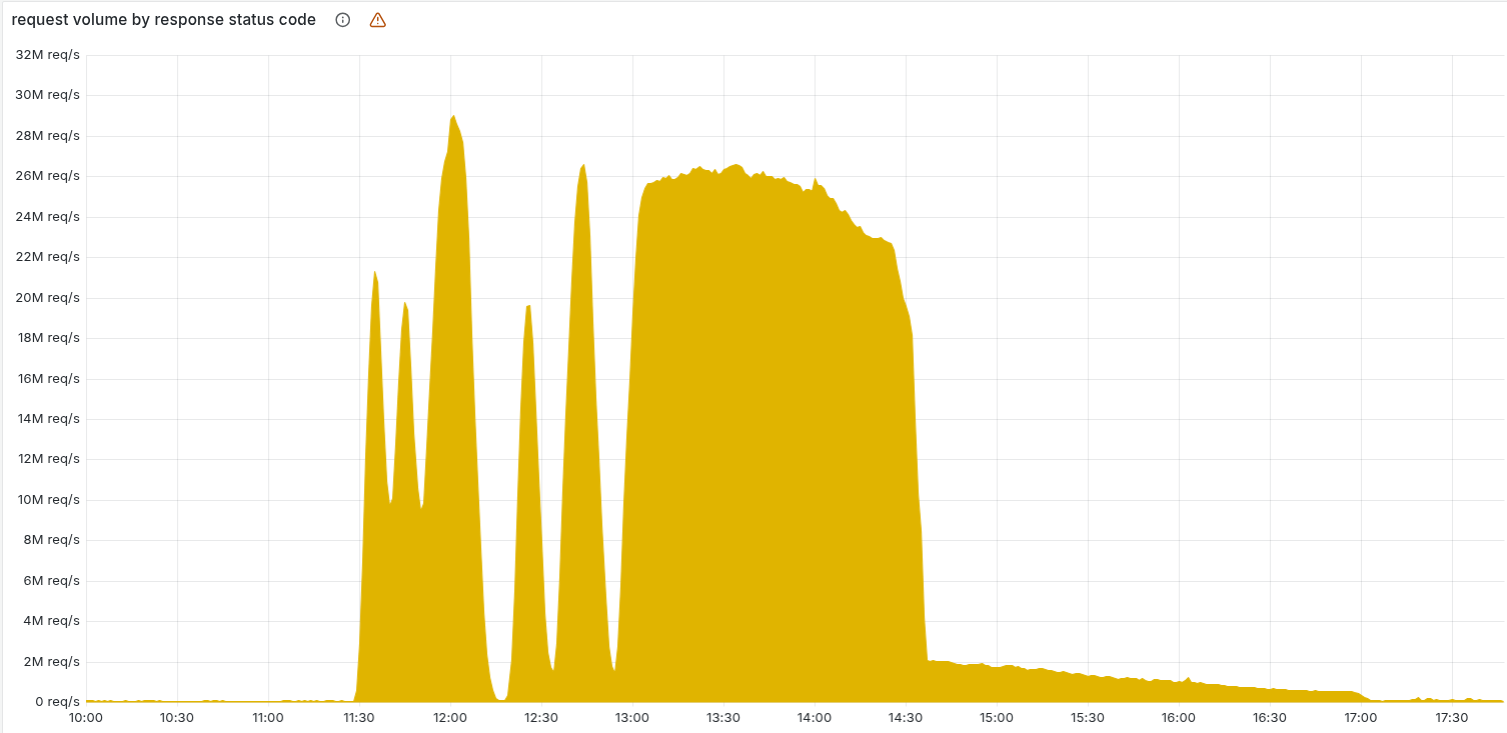
- The Cloudflare outage showed how dependent a centralized infrastructure makes today’s crypto platforms.
- The incident sparked debate among industry experts about whether Web3 should continue to operate in its current architecture.
A Cloudflare outage on November 18th crippled some of the world’s largest crypto platforms and highlighted how dependent Web3 remains on traditional Web2 infrastructure.
The outage, which began at 11:20 UTC and lasted until full recovery at 17:06 UTC, was Cloudflare’s worst outage since 2019.
Many crypto exchanges, wallets and DeFi applications were offline within minutes, raising questions about the industry’s long-standing claims about decentralization and resilience.
The outage began after a change in database permissions created an oversized file within Cloudflare’s bot management system. This file doubled in size after being spread across the network, exceeding memory limits and triggering widespread HTTP 5xx errors.

Core services such as CDN provisioning, Workers KV, authentication and dashboard logins were affected. Matthew Prince, CEO of CLOUD confirmed laterthat it was not a cyberattack, but that the problem was due to configuration behavior within a ClickHouse cluster.
Crypto platforms failed because core infrastructure failed
Cloudflare’s failure caused a shock in the crypto market. Major exchanges and DeFi protocols with high traffic went offline at the same time.
While the blockchains themselves remained operational, users were unable to interact with them because the interfaces, APIs, and routing layers they rely on were tied to Cloudflare’s network.
Industry researcher White Whale found that DeFi applications that describe themselves as unstoppable became unattainable the moment Cloudflare went down.
This exposed a technological paradox: while decentralized networks are inherently autonomous, their usability remains dependent on these centralized gateways. If these gateways fail, the decentralized financial network will no longer be accessible.
Large parts of Web3 were actually shut down for almost three hours. Even after most of the issues were resolved at 2:30 PM UTC, some issues remained as traffic increased again.

Cloudflare network administrators had to manually remove bad configuration files on their network and restart their systems.
Experts debate the future of Web3 infrastructure
Reporting on the outage sparked numerous reactions in the industry. Nader Dabit from Eigen Labs pointed out the growing gap between the decentralization of crypto markets and their dependence on centralized infrastructures like Cloudflare and AWS hin.
watching my favorite decentralized censorship-resistant unstoppable crypto web3 app get eviscerated because "cloudflare went down" pic.twitter.com/XUEhUQZuLz
— nader dabit (@dabit3) November 18, 2025
In a contrary statement claimed the CEO of Helius Labs said that Cloudflare’s size is enormous and handles in one second many times the traffic of all blockchains in their entire life.
He argued that the Web3 infrastructure was nowhere near Cloudflare’s level, so relying on centralized providers was inevitable for the time being.
"cloudflare down, heh, but
never goes down" dear noobs,
cloudflare processes 85 trillion more requests per second than all chains ever have combined for in their lifetime
sit this one out
like a toddler bragging about flying a toy plane to a pilot
— because | helius.dev (@0xMert_) November 18, 2025
The problem that became abundantly clear on November 18th is that crypto markets operate on centrally controlled systems that can collapse at any time. While the blockchain networks themselves remained secure, practice once again proves the weakest link rule.







No Comments